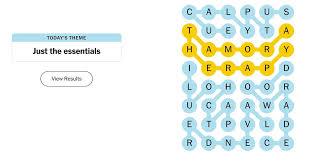The Significance of NYT Strands Hints in Modern Journalism

Introduction
Recently, The New York Times has introduced a new feature known as “strands hints.” This innovative approach aims to provide readers with a deeper context and multifaceted understanding of ongoing stories. In an era where information overload is rampant, this initiative is particularly important. It enhances reader engagement and contextual comprehension, helping audiences navigate the complexities of news reporting.
What Are NYT Strands Hints?
NYT strands hints are essentially textual prompts or clues embedded within larger articles. They direct readers to related stories, historical context, or background information that can enrich their understanding of current events. For example, in an article discussing political developments, a strand hint might guide the reader to previous pieces about similar debates or legislative outcomes.
Recent Applications and Impact
The recent execution of this feature has garnered attention in various sections of the publication. During the coverage of the 2023 midterm elections in the United States, strands hints directed readers to data on voter turnout and past election results. This move not only increased reader retention but also fostered an informed discussion around current political strategies.
Critics and supporters alike have noted that strands hints can serve as valuable educational tools, bridging gaps in knowledge for readers who may not have a robust background in certain topics. In this way, the NYT reinforces its role as a crucial resource in promoting informed citizenship.
Challenges and Considerations
However, the introduction of strands hints is not without challenges. Some readers may find the additional links distracting, while others might argue that they divert from the primary narrative of the stories. The Times acknowledges these concerns and is actively seeking feedback to strike a balance that encourages engagement without overwhelming audiences.
Conclusion
In summary, the introduction of NYT strands hints reflects a significant shift towards more interactive journalism. By providing layers of context, The New York Times is not only enriching its content but also paving the way for a new form of reader engagement. As the media landscape continues to evolve, such innovations will likely play a key role in shaping how readers consume news and make sense of the world around them. This development is an encouraging sign for the future of journalism, aiming to inform rather than merely report.
